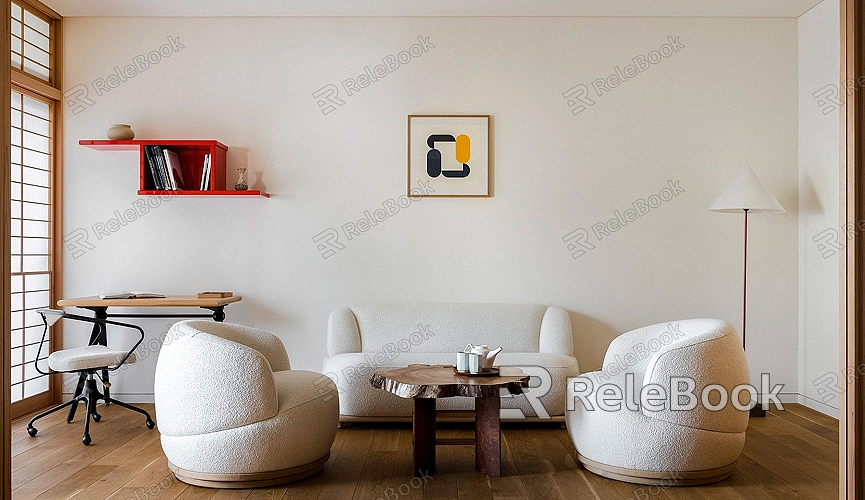How to Apply a Texture to a 3D Model
For both beginners and experienced designers, applying textures to a 3D model can be a precise and often complex task that requires attention to detail. Textures are widely used across various industries, from architectural visualization and game scene creation to film animation and virtual reality. Popular 3D software tools such as Blender, 3ds Max, Maya, Cinema 4D, and ZBrush are essential for texture application, and the process involves multiple steps and techniques. In this article, we'll break down how to effectively apply textures to a 3D model and help you optimize this process for your own work.

1. Identify the Texture Type
Before applying textures to a 3D model, it's essential to determine which type of texture is most appropriate. Common texture types include:
Diffuse Texture: Also known as the base color texture, it affects the overall color of the model’s surface.
Normal Map: This texture simulates surface details to affect light reflection, giving the model more complexity without adding geometry.
Specular Map: Controls the intensity of light reflection on the surface, ideal for materials that need to appear shiny, like metal or water.
Displacement Map: Alters the actual geometry of the surface by modifying the position of vertices, adding fine surface detail such as wrinkles or rocks.
Choosing the correct texture type is crucial based on the needs of the project. Using too many textures or overly complex textures can impact rendering times and system performance.
2. Create and Import Textures
Textures are typically created in software like Photoshop, Substance Painter, or Quixel Mixer. Once your textures are ready, they must be imported into your 3D software in the appropriate format, such as PNG, JPG, or EXR.
UV Unwrapping: Before applying a texture, the model must be UV unwrapped. UV unwrapping is the process of flattening a 3D surface into a 2D plane so that textures can be mapped correctly. A proper UV map ensures that the texture will fit the model without stretching or distortion.
Importing Textures: Once the texture is created, you’ll need to import it into your 3D software’s material editor. This can often be done by simply dragging and dropping the file, or by selecting the texture within the material settings.
If you find the process of searching for high-quality textures time-consuming or complicated, you can visit Relebook and download premium 3D textures directly from textures.relebook.com.
3. Adjust Texture Mapping
The way textures are mapped onto the model directly affects how they appear on the surface. Common types of texture mapping include:
Planar Mapping: Best for flat surfaces or simple geometries, where the texture is evenly projected onto a single face.
Spherical Mapping: Used for round objects, such as spheres or cylinders, where the texture wraps around the shape.
Cubic Mapping: Ideal for environment maps or skyboxes, where the texture is applied to six faces of a cube.
Cylindrical Mapping: Applied to cylindrical shapes, such as columns or pipes, where the texture wraps around the sides.
Choosing the right mapping method for the geometry helps ensure that the texture is not distorted or misaligned.

4. Fine-tune Texture Coordinates
Texture coordinates determine how textures align with the 3D model’s surface. The most common coordinate systems are:
UV Coordinates: Each point on the 3D model’s surface corresponds to a specific 2D coordinate, which influences how the texture is laid out.
Projection Mapping: This technique applies a texture by projecting it onto the model’s surface, often used for complex or large-scale environments.
When working with UV coordinates, if you notice the texture stretching or misaligning, you can use modeling tools to adjust the UV map, ensuring that the texture matches the model's surface perfectly.
5. Add Detail Textures
Beyond the base color texture, you can add additional detail textures to enhance realism, such as:
Roughness Map: Controls the smoothness of the model’s surface, often used alongside specular maps to add realism by simulating wear and tear.
Opacity Map: This texture determines which parts of the model are transparent, useful for materials like glass or water.
These additional textures can be added through the material editor by adjusting specific texture channels to achieve the desired effect.
6. Rendering Settings and Adjustments
Once your textures are applied, the next step is to adjust the rendering settings. Common rendering engines like V-Ray, Arnold, Cycles, and Corona offer comprehensive texture rendering options.
Lighting Adjustments: Ensure that the scene’s lighting interacts correctly with the textures, affecting reflections and shadows.
Material Optimization: Before rendering, make sure all materials are correctly configured to avoid overly saturated or flat textures.
Post-processing: After rendering, use software like Photoshop to fine-tune the final image, adjusting color balance, adding details, or correcting any issues with the render.
By following these steps—from choosing the appropriate texture type to fine-tuning mappings and coordinates—each part of the process will contribute to achieving a realistic, high-quality final result. Textures are not just decorative; they play a key role in bringing 3D models to life, enhancing realism and detail.
If you’re looking for high-quality 3D textures or models, whether for SketchUp, 3ds Max, or other software, Relebook offers a wide range of resources to help you achieve stunning visual effects in your projects.

